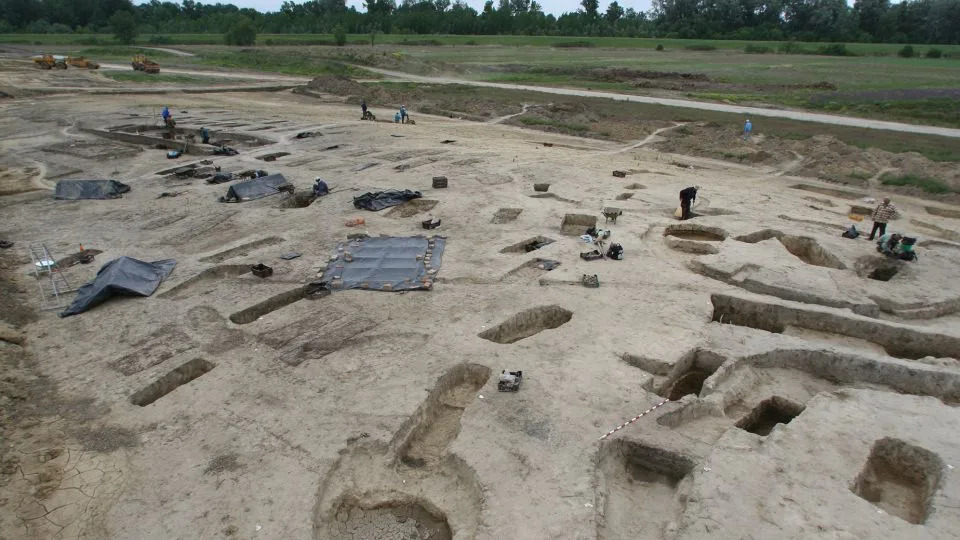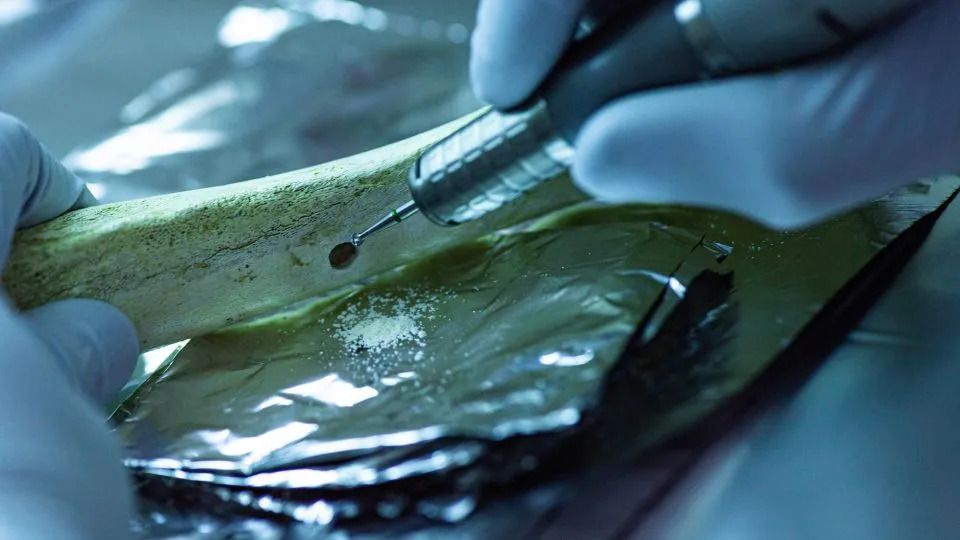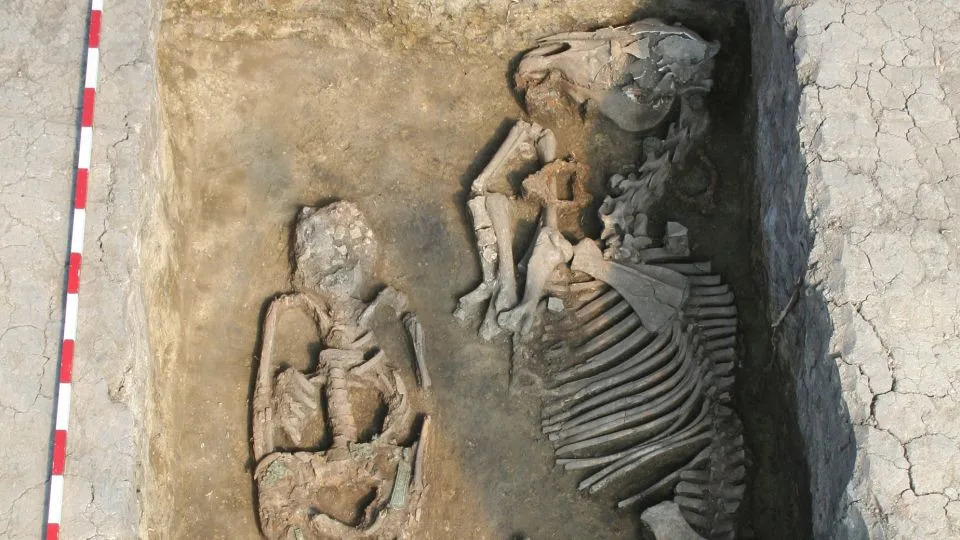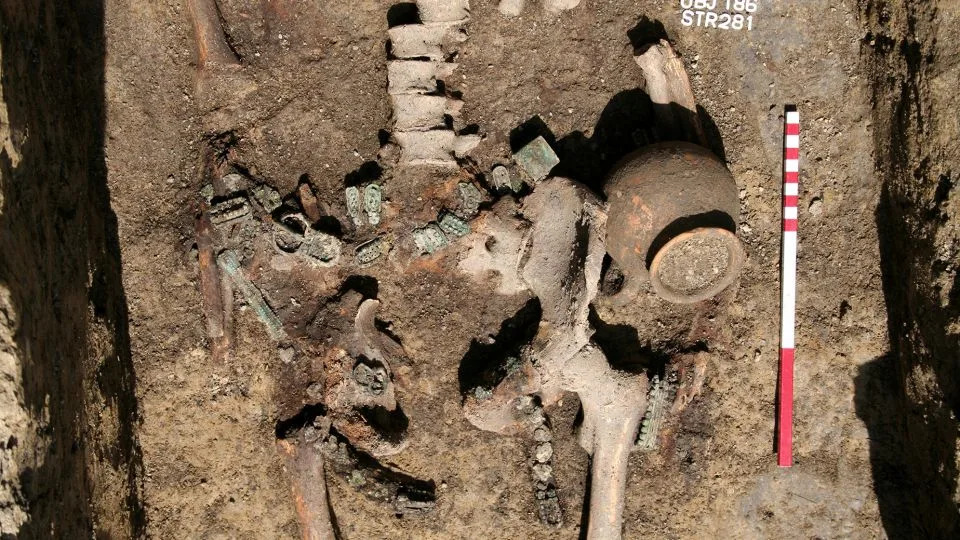Sign up for CNN’s Wonder Theory science newsletter. Explore the universe with news on fascinating discoveries, scientific advancements and more.
Ancient DNA is spilling more secrets about the Avars, a fearsome people who built a mysterious empire that ruled much of Central and Eastern Europe for 250 years from the mid-sixth century.
Primarily known from the accounts of adversaries, the Avars confounded the Byzantines with formidable horseback warriors who appeared suddenly on their doorstep. The enigmatic nomads came en masse from the Mongolian steppe in what was one of the biggest and fastest long-haul migrations in ancient history.
With opulent graves but no written records, the empire and its people have remained largely in the shadows of history until recently. But a landmark April 2022 study involving ancient DNA taken from the graves of the Avar elite shed light on the empire’s far-flung origins.
Now, a new study analyzing the remains of 424 people buried in four cemeteries unearthed in Hungary has revealed details about Avar family and social life and how the newcomers interacted with the population of their adopted homeland.
The excavations of an Avar cemetery in Rákóczifalva, Hungary, took place in 2006. - Institute of Archaeological Sciences/Eötvös Loránd University Múzeum
“What surprised me most was the simple fact that these people in the cemeteries are so interconnected,” said Zsófia Rácz, a researcher at Eötvös Loránd University’s Institute of Archaeological Sciences in Budapest, Hungary. Rácz was a study coauthor of the latest report.
The researchers were able to build detailed family trees or pedigrees, the largest of which spanned nine generations across 2 ½ centuries. The team discovered that around 300 of the individuals had a close relative buried in the same cemetery.
The analysis showed that men stayed in their community after marriage, while women married outside their original community — a pattern known as patrilocality.
“For all the mothers, we don’t find the parents. The parents aren’t at the site. While all the males are the descendants of the founders,” said Guido Alberto Gnecchi-Ruscone, lead author of the study that appeared Wednesday in the journal Nature.
Study of mitochondrial DNA, which reveals the female line, showed a high variability, suggesting that the women who married into the Avar groups were from different places, according to Gnecchi-Ruscone, a postdoctoral researcher of archaeogenetics at the Max Planck Institute for Evolutionary Anthropology in Leipzig, Germany. They still shared a “steppe” genetic ancestry, indicating that they were probably not conquered local people.
A tiny sample is drilled from a bone at the ancient DNA laboratory at the Max Planck Institute for Evolutionary Anthropology in Leipzig, Germany. - Max Planck Institute for Evolutionary Anthropology
Multiple partners in patriarchal clans
What’s more, the study found, it was relatively common for both men and women in Avar society to have children with multiple partners.
In the case of men, researchers found two partners in 10 cases, three partners in four cases and four partners in one case. Having multiple wives may have been relatively common in the general population as well as the elite, the study authors wrote.
The team also uncovered multiple cases of closely related male individuals having offspring with the same female partner: three pairs of fathers and sons, two pairs of full brothers, and one sibling of paternal half brothers and an uncle and nephew.
Similar “levirate unions” that took place after the death of the woman’s husband existed in other Eurasian steppe societies, according to the study, and suggests that the Avars, who abandoned their nomadic way of life based on herding and became more settled shortly after arriving in Europe, clung to some aspects of their former way of life.
A male who died at a young age was buried with a horse in the eighth century at the Rákóczifalva cemetery. - Institute of Archaeological Sciences/Eötvös Loránd University Múzeum
Lara Cassidy, a geneticist and assistant professor at Trinity College Dublin who was not involved in the new research, said the authors had “deftly unravelled” the organizing principles of this medieval society, providing “compelling evidence for a rigid patrilineal system, in which children belong to their father’s family and ancestry is traced from father to son.”
Writing in a commentary published alongside the research, she largely agreed with the authors’ explanation for multiple reproductive partners.
“Polygamy (having multiple marriage partners), serial monogamous marriages and extramarital relations are all possible explanations,” she said.
“However, two cases of men with multiple older female partners, all middle-aged at death, makes a good argument for polygyny (having multiple wives). By contrast, most of the cases of women with multiple partners were apparent levirate unions, in which a widow would marry the son or brother of the deceased. This is a common custom in pastoralists … both providing for widows and obliging them to fulfil marriage contracts that are conditional on them bearing male heirs.”
A male Avar burial shows a belt garniture and a ceramic mug dating from the eighth century. - Institute of Archaeological Sciences/Eötvös Loránd University; Múzeum
Tight-knit family groups
Gnecchi-Ruscone said the biological continuity in the tight-knit population the researchers studied was striking, especially given that there was no sign of interbreeding between close blood relatives — a phenomenon known as consanguinity.
“Even more distant interbreeding like (between) cousins or second cousins, it leaves traces genetically. And we see absolutely no consanguinity in these individuals,” he said.
“This really tells us that they knew who their biological relatives were, and they traced their biological relatives over the generations.”
It wasn’t possible to understand the gender power dynamics of the community through the study of ancient DNA alone, Gnecchi-Ruscone said.
Burials of men were more likely to include high-status grave goods such as horses, saddles and harnesses, Rácz said. However, women likely played a role in promoting social cohesion linking individual communities.
Cassidy said that the oral history of female-line genealogy may have been important for the Avars, ensuring that daughters did not take husbands from among their mothers’ or grandmothers’ kin.
Avar graves — around 100,000 have been excavated so far — form an important part of Europe’s archaeological heritage.
The Avars were once part of what the Chinese called the Rouran khaganate or confederation of tribes, which the Turks defeated in 550, forcing the Avars to flee westward.
Traveling more than 5,000 kilometers (3,100 miles) in a few years from Mongolia to the Caucasus, according to the 2022 study published in the journal Cell that pinpointed the group’s Asian ancestry, the Avars set up a base in what’s now Hungary and came close to crushing Constantinople, the center of the Byzantine Empire.
Some historians credit the Avars with bringing the stirrup to Europe — a transformative technology that made mounted warfare possible and was subsequently widely adopted across the continent.
The study was a “fruitful interweaving of genetics, history, and archaeology,” according to Bryan Miller, an assistant professor of Central Asian art and archaeology at the University of Michigan, who wasn’t involved in the study.
“Many previous studies have purported to sweep across the entirety of Eurasia with a wide population, relying on one individual per community or a handful of individuals to represent an entire culture or society,” he said via email.
“Instead, this study shows how only a data set with far greater resolution, with fuller investigations of whole communities, can provide the kinds of definitive or nuanced narratives that the earlier big data studies attempted to provide.”
For more CNN news and newsletters create an account at CNN.com

 German (DE)
German (DE)  English (US)
English (US)  Spanish (ES)
Spanish (ES)  French (FR)
French (FR)  Hindi (IN)
Hindi (IN)  Italian (IT)
Italian (IT)  Russian (RU)
Russian (RU)  1 week ago
1 week ago
























Comments